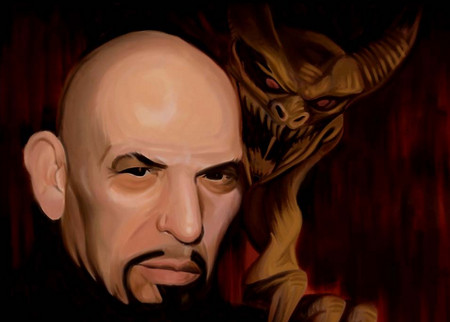A religious Satanist is a follower of modern-day religious Satanism, who recognizes Satan as a virile pre-Christian, pagan entity or principle. Although they normally refer to themselves as Satanists, they occasionally use the term “witch.”
The most famous Satanist in recent years is, and was Anton Szandor LaVey, who founded the Church of Satan in 1966. LaVey wrote a series of three books, The Satanic Witch, The Satanic Bible (1969) and other works which remain highly influential.
LaVey rejects most of the symbols and acts associated to Satanism: the Black Mass, cruelty to animals, or a literal belief in Satan. Instead, he considers Satan as the human instinct within ourselves, supports a view of human beings as animals and rejects many social structures that inhibit our instincts.

LaVey explains that Satan is only a symbol in an interview with Washington Post magazine.
“Satan is just a symbol, nothing more,” LaVey says. “Satan signifies our love of the worldly and our rejection of the pallid, ineffectual image of Christ on the cross.”
Anton LaVey stated in The Satanic Bible (The chapter in the Book of Lucifer called The Black Mass):
“The usual assumption is that the Satanic ceremony or service is always called a black mass. A black mass is not the magical ceremony practiced by Satanists. The Satanist would only employ the use of a black mass as a form of psychodrama. Furthermore, a black mass does not necessarily imply that the performers of such are Satanists. A black mass is essentially a parody of the religious service of the Roman Catholic Church, but can be loosely applied to a satire on any religious ceremony.”
Central is the idea inherited from Nietzsche that an individual must enforce his own meaning on life and rise above the perceived conformity of the masses.
The Satanist is seen as equivalent to Nietzsche’s Übermensch; LaVey claimed “Satanists are born, not made” and that “[Satanists] have a disease called independence that needs to be recognised just like alcoholism.”
There is a libertarian element here; diversity is encouraged, everyone is expected to discover their own sexuality, chart their own personality, and decide their own ambitions in life. In this stress on individuality, Satanism is considered a “Left-Hand Path” religion.
The magician Aleister Crowley, who referred to himself as “The Great Beast 666” is another great figure of the so-called “Satanism” and was a source of inspiration for LaVey. Crowley’s maxim, “Do what thou wilt shall be the whole of the Law!” captures a common Satanic attitude, which the myth of Satan’s rebellion is thought to exemplify.
There have been estimates of the total number of religious Satanists at 20,000 adults in the U.S. Some believe that the religion has been in decline for many years. But there is no reliable data on either conjecture.
